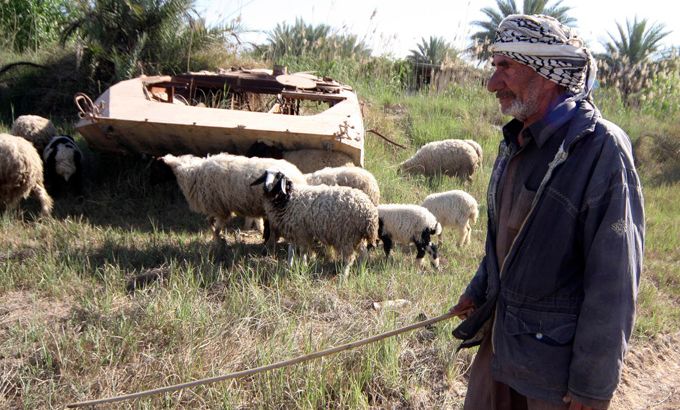
Iraq: Ten years after the invasion
Are Iraq and the countries involved in the conflict still suffering the consequences of the US-led invasion?
Car bombs and suicide attacks have shattered Iraq’s capital on the tenth anniversary of the invasion that removed Saddam Hussein.
|
“I am kind of happy about the way that turned out our life. Before 2003 I couldn’t dream of having more freedom to talk about what is in my mind …. These 10 years changed my life … being in a war, and being after that in a sectarian war, having a new method of democracy … I have a lot of pictures, pictures of other good things. “ – Noof Assi, blogger |
It is a stark reminder of the fragile state of security in a country still struggling with insurgency, sectarian division, political instability and stuttering along the road to recovery.
Recovery from an invasion based on the premise that Saddam Hussein was hiding weapons of mass destruction, which have ever been found.
Many Iraqis complain that after 10 years of rebuilding, they still lack basic public services.
The United Nations says almost seven million Iraqis, almost a quarter of the population, are living in poverty.
Electricity supplies remain unreliable. On average an Iraqi household receives just eight hours of power a day.
Four out of every 10 people in Iraq do not have access to clean water. And despite improvements, most Iraqis only have limited primary healthcare. It is estimated that up to half of all doctors have left the country.
|
“Just another day, just another bombing … there is nothing special about today …. For the Iraqis, the anniversay doesn’t mean that much, but simply the bombing which we witness today is a message that Iraq is still unstable, that the American adventure in Iraq didn’t succeed at all. “ – Ghassan al-Attiyah, the founder of the Iraq Foundation for Development and Democracy |
Estimates vary widely about the cost of the war.
The non-partisan Congressional Research Service puts the financial cost at just over $800bn but other estimates suggest it could rise to anything between $1.7tn and $3tn.
A total of $60bn has been spent on reconstruction and development by the US government. But a report by the special inspector general for Iraq reconstruction says that $8bn dollars of that was wasted.
“The infrastructure has been totally neglected under the previous regimes and the damage is enormous. There’s a need of rebuilding everything and that requires tens of billions of dollars – in total, perhaps about more than 200 billion,” says Iraq’s Deputy Prime Minister Hussein al-Shahrastani.
So was the war a success? Or are Iraq and the countries involved in the conflict still suffering the consequences?
Joining presenter Jane Dutton on Inside Story to discuss the reality of life in Iraq and the cost of war are guests: Noof Assi, a blogger and radio host, who was 13 at the time of the US-led invasion; Ghassan al-Attiyah, the founder of the Iraq Foundation for Development and Democracy; and Matthew Duss, a foreign policy analyst and director of Middle East Progress at the Centre for American Progress.
|
“It was a war conceived in Washington as a quick response to the so-called terror threat from Saddam Hussein. But ten years later, the costs of the war are still being felt in Iraq and beyond. Over 100,000 people killed, billions of dollars squandered, and a generation of Iraqis dealing with its legacy. The initial US and British-led invasion ended with tanks entering the centre of Baghdad three weeks later and Saddam Hussein’s hold on the country quickly collapsed. But Iraq was far from stable and US President George Bush’s now infamous declaration of victory was in contrast to the long and violent insurgency that was to follow, and with no weapons of mass destruction found in Iraq, the main pretext for the war had been discredited. Hazem Sika, Al Jazeera Correspondent |